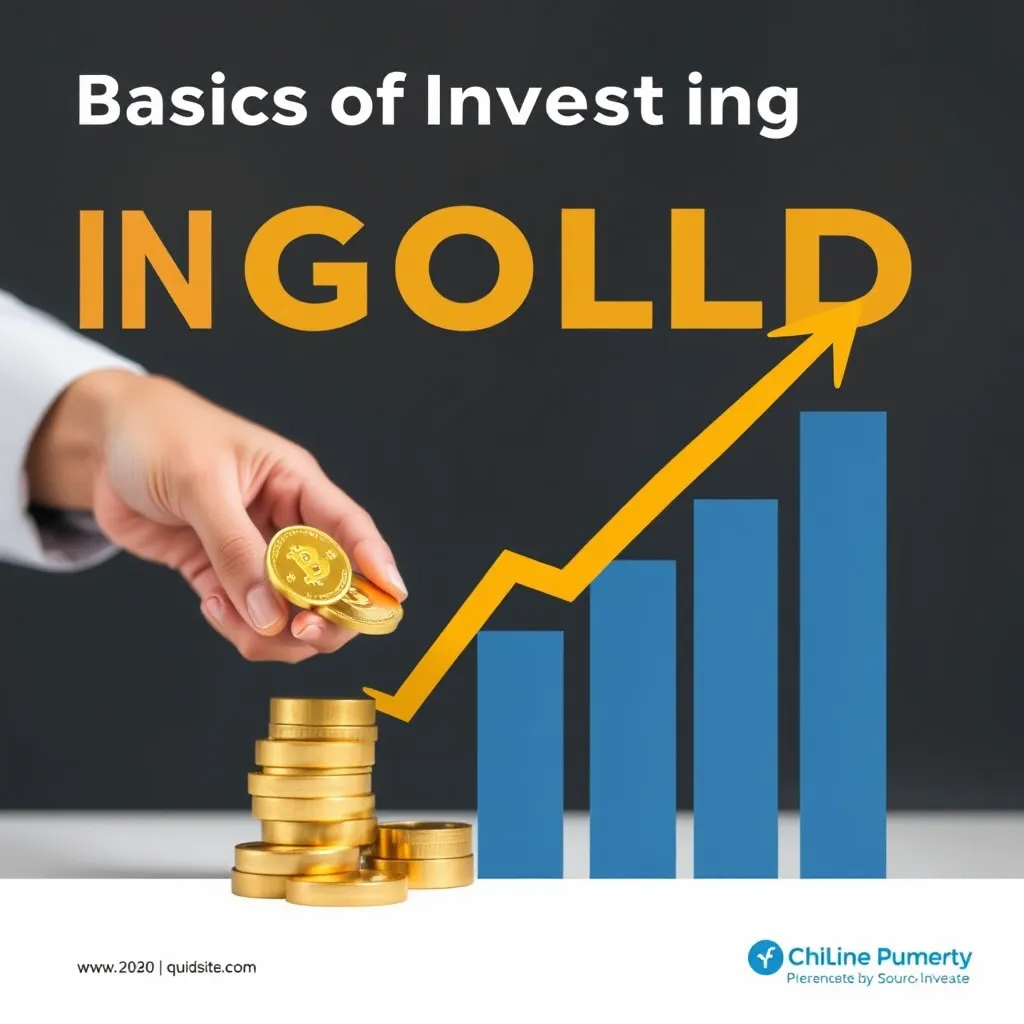Summary
Investing in gold has been a tried-and-true method for preserving wealth over centuries. As an asset that often holds its value during economic downturns, gold can provide stability in a diversified investment portfolio. In this guide, we’ll explore the different methods of investing in gold, the risks and rewards, and how it fits into your overall investment strategy. Whether you’re a beginner or a seasoned investor, understanding the basics of gold investing can help you make informed decisions to secure your financial future.
Why Invest in Gold?
A History of Stability

Gold has been used as a store of value for thousands of years. Unlike fiat currencies, which can lose value due to inflation, gold has historically maintained its purchasing power. Its scarcity, universal acceptance, and ability to retain value make it an attractive investment during times of economic instability.
Hedge Against Inflation and Currency Risk
One of the main reasons investors turn to gold is its ability to hedge against inflation. When the value of currencies declines due to inflation or economic crises, gold often rises in value. This makes gold an appealing option for protecting wealth during uncertain times. Gold also acts as a hedge against currency risk, especially when the U.S. dollar weakens.
Different Ways to Invest in Gold
Physical Gold: Bars, Coins, and Jewelry
Investing in physical gold is the most traditional method. Investors can buy gold bars, coins, or even gold jewelry. Physical gold offers the advantage of being a tangible asset that you can hold, store, and sell as needed. Popular options include gold bullion bars, gold coins like the American Gold Eagle, and collectible coins.
However, owning physical gold comes with certain risks, such as theft and storage costs. It’s important to invest in secure storage solutions like bank vaults or home safes to protect your gold investment.
Pros of Physical Gold
- Tangible asset you can own and store.
- Long-term store of value.
- Direct ownership without third-party involvement.
Cons of Physical Gold
- Storage and insurance costs.
- Difficult to liquidate quickly.
- Premiums above spot price can be high for certain coins or bars.
Gold ETFs: A Convenient Way to Invest
For investors who don’t want the hassle of storing physical gold, Gold ETFs (Exchange-Traded Funds) offer an alternative. These funds track the price of gold and allow investors to gain exposure to gold without owning the physical asset. Popular gold ETFs include SPDR Gold Shares (GLD) and iShares Gold Trust (IAU).
Gold ETFs are highly liquid, meaning you can buy and sell shares on the stock market as easily as any other stock. They provide a convenient way to invest in gold without the need for secure storage.
Pros of Gold ETFs
- Easy to buy and sell on stock exchanges.
- No need to store physical gold.
- Lower transaction costs compared to buying physical gold.
Cons of Gold ETFs
- No direct ownership of gold.
- Potential management fees.
- May not track the exact price of gold due to fund management.
Gold Mining Stocks: Investing in Gold Companies
Investors can also gain exposure to gold by investing in gold mining stocks. These are shares in companies that mine for gold. The value of these stocks is tied not only to the price of gold but also to the company’s operational performance. Well-established mining companies such as Barrick Gold (GOLD) and Newmont Corporation (NEM) are popular choices for gold investors.
Investing in gold mining stocks can be riskier than buying physical gold or ETFs because the stock’s performance depends on factors such as the company’s management, mining costs, and exploration success.
Pros of Gold Mining Stocks
- Potential for dividends.
- Higher returns when gold prices rise.
- Exposure to both gold and the performance of the company.
Cons of Gold Mining Stocks
- Company-specific risks, such as poor management or operational challenges.
- Stock market volatility.
- Does not provide the same safe-haven characteristics as physical gold.
Gold Mutual Funds: Managed Gold Investments
Gold mutual funds pool investor money to invest in a diversified portfolio of gold-related assets, including gold mining stocks, gold ETFs, and other gold-related investments. These funds are actively managed, meaning fund managers make decisions on which gold investments to include in the portfolio.
Gold mutual funds offer diversification within the gold sector and are suitable for investors who prefer to have their investments managed by professionals. However, like other managed funds, they come with management fees.
Pros of Gold Mutual Funds
- Professional management and diversification.
- Access to a wide range of gold investments.
- Potential for long-term growth.
Cons of Gold Mutual Funds
- Management fees.
- Performance depends on the manager’s investment decisions.
- Not as liquid as ETFs or physical gold.
When Should You Invest in Gold?
Economic Uncertainty and Recessions
Gold tends to perform well during periods of economic uncertainty and recession. When stock markets fall and inflation rises, gold often increases in value as investors flock to safe-haven assets. If you believe that an economic downturn is on the horizon, increasing your exposure to gold may help protect your portfolio.
Inflationary Periods
During inflationary periods, when the value of paper currency declines, gold prices tend to rise. Gold acts as a hedge against inflation, making it a valuable addition to your portfolio during times of rising prices.
Portfolio Diversification
Gold is also an effective way to diversify your investment portfolio. Because gold typically performs differently from stocks and bonds, it can reduce the overall volatility of your portfolio and provide balance during market fluctuations.
Risks of Investing in Gold
Market Volatility
While gold is often considered a safe haven, its price can still be volatile in the short term. Gold prices can be influenced by factors such as central bank policies, interest rates, and global geopolitical events. This means that while gold may protect against long-term inflation, it may experience fluctuations over shorter time periods.
No Yield or Income
Unlike stocks or bonds, gold does not pay dividends or interest. When you invest in gold, your returns depend solely on the price appreciation of the metal itself. If the price of gold remains stagnant, you won’t earn any income from your investment.
Liquidity Challenges with Physical Gold
Selling physical gold can sometimes be challenging, especially if you own gold in the form of collectible coins or jewelry. The liquidity of physical gold is lower than that of gold ETFs or gold mining stocks, which can be bought and sold on the open market with ease.
How to Get Started with Gold Investing
Determine Your Goals
Before investing in gold, consider your financial goals. Are you looking to hedge against inflation, diversify your portfolio, or protect your wealth during economic downturns? Your goals will determine the type of gold investment that best suits your needs.
Decide How Much to Allocate
Experts typically recommend allocating between 5% and 10% of your investment portfolio to gold. This allows you to benefit from gold’s stability while still maintaining a diversified portfolio with stocks, bonds, and other assets.
Choose the Right Investment Option
Once you’ve determined your goals and budget, choose the right gold investment for your needs. Physical gold is ideal for long-term investors seeking security, while gold ETFs and mining stocks are better suited for those looking for liquidity and higher returns.
Conclusion: Is Gold the Right Investment for You?
Gold has long been considered a reliable investment during times of economic uncertainty and inflation. Its ability to preserve wealth makes it an attractive option for diversifying your portfolio and protecting against market downturns. Whether you invest in physical gold, ETFs, mining stocks, or mutual funds, understanding the risks and benefits is key to making informed decisions. If you’re looking for a hedge against inflation and a way to balance your investments, gold could be a valuable addition to your portfolio.
Résumé
- What Is Gold Investing?: Investing in gold involves buying physical gold, gold ETFs, mining stocks, or mutual funds to preserve wealth and hedge against inflation.
- Why Invest in Gold?: Gold has a history of stability, protects against inflation, and serves as a safe haven during economic uncertainty.
- Types of Gold Investments: Physical gold (bars, coins, jewelry), gold ETFs, gold mining stocks, and gold mutual funds are the main ways to invest in gold.
- Best Times to Invest: Gold performs well during economic downturns, inflationary periods, and market volatility.
- Risks of Gold Investing: Market volatility, lack of income yield, and liquidity challenges with physical gold are key risks.
- How to Get Started: Set investment goals, decide on your allocation, and choose the gold investment type that suits your needs.











